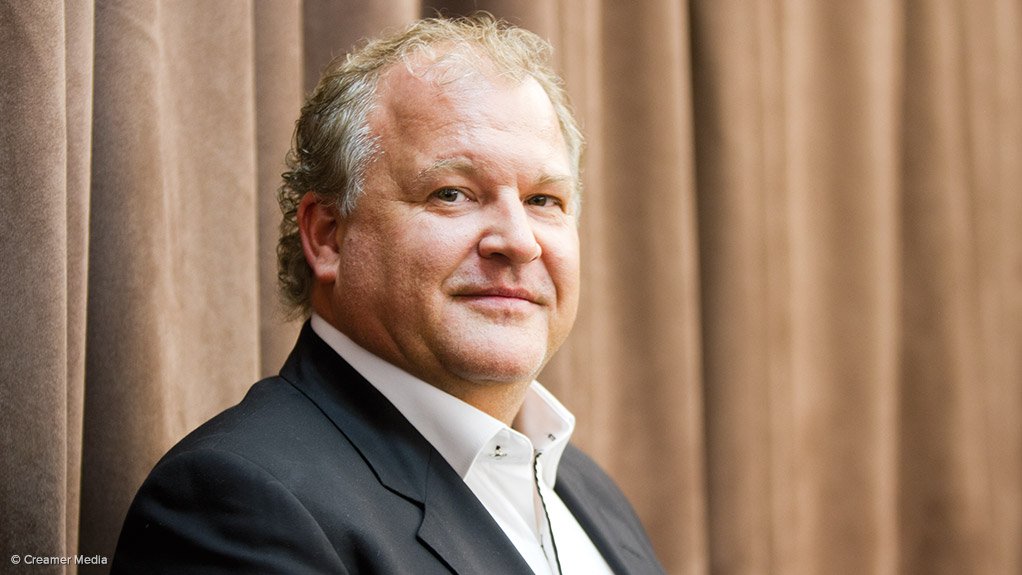VANCOUVER (miningweekly.com) – Canadian junior explorer Giyani Gold is strategically repositioning to take advantage of the rising tide in the energy metals market.
After dabbling in several project opportunities in recent years, including an oil and coal infrastructure opportunity in Turkey, and gold exploration in north-eastern South Africa, the company is redoubling its focus on manganese prospects in Botswana, which executive chairperson and CEO Duane Parnham, believes hold “company maker” potential.
Parnham, who has spent his career developing and founding several resource-focused companies, including UNX Energy Corp, Temex Resources, Forsys Metals, Canoe Mining Ventures and Angus Mining Namibia, believes the commodity cycle is turning now, signalling the probable start of a new commodity super cycle.
Parnham is a 12.8% shareholder in Giyani, which benefits from a loyal shareholder base. After the Turkish opportunity fell through, Giyani is now looking to pull out of South Africa, and is negotiating the sale of its Rock Island prospect to its State-owned joint venture partner Corridor Mining Resources, in pursuit of manganese interests in Botswana and Zambia.
ENERGY METALS
Parnham tells Mining Weekly Online in an interview that he believes there is a rising tide in the manganese market globally, fuelled by growth in the battery technology sector.
Manganese prices have been rising in the last six months, climbing 10% since August to $1.85/kg late in December.
“We are repositioning Giyani to be a one-stop shop in the battery technology sector. We will first venture into the manganese space, thereafter look at cobalt outside of the Democratic Republic of Congo, and then further down the line, we’ll also look at lithium,” Parnham says.
According to him, the battery metals market today shows signs similar to the 2006 uranium boom. During that period, Parnham advanced Forsys Metals from start-up to a fully permitted project which reached a market capitalisation exceeding $800-million.
“When comparing commodity price forecasts based on growing demand fundamentals coupled with few suitable sources of supply, the battery metals market is poised to replicate or even surpass the success we had with uranium. We are now working with countries in the Southern Africa Development Community that welcome new mines and want to participate in future markets. Projects in the region I have championed have returned $1.2-billion to investors,” Parnham states.
Manganese will be the next power play, he suggests.
The makeup of three out of the four main battery technologies for electric vehicles consists of increasing amounts of energy metals such as manganese and cobalt by volume, and also metals such as nickel and copper.
He says one must know the precise grade/chemical makeup the battery manufacturers require for their products. “We have the opportunity to design our project with the specific view of supplying these offtakers and to engineer our product to conform to their required specifications,” he says.
Not all manganese deposits out there are suitable for manufacturing battery-grade manganese, Parnham notes, as ferromanganese alloys are not suitable for end-users, and cannot cost-effectively be upgraded to the required specifications.
THE OPPORTUNITY
Giyani’s mission is to separate itself from the competition by looking for manganese in an underexplored area of Botswana. “If we can find a viable deposit in Botswana, we’ll design product to meet offtakers’ needs,” Parnham says.
The company in October agreed to acquire an 88% to 95% interest in various prospecting licences in Botswana that are underexplored and highly prospective of manganese development. The significant 13 283.1 km2 land package includes an application for the Kgwakgwe Hill manganese mine and also surrounds Rio Tinto’s recent notable iron-ore discovery.
The licences lie in the Kanye basin, covering magnetic-high features in areas underlain by rocks of the Transvaal Supergroup,which extends north from the Griqualand West basin, in South Africa. The Griqualand West basin is host to several large manganese mines, which collectively comprise the Kalahari Manganese Field, located immediately west of Hotazel, in the Northern Cape province of South Africa.
More than 50% of the world’s manganese resources are contained in this mineral district. The cover of Kalahari sand has historically hampered exploration for manganese deposits in the Kalahari Manganese Field and Giyani believes that the prospective stratigraphy in southern Botswana is likely to be similarly covered by thick sand. Sand cover has restricted exploration to some degree, but Parnham has now hired a team of geologists to use tools such as airborne geophysics, Landsat imagery, and borehole data to complete a compilation to guide future exploration.
Parnham says the claim block became open in October, and Giyani was first to secure it.
Meanwhile, Giyani has also agreed to acquire a 70% interest in two past-producing high-grade manganese mines in Zambia.
The Kampumba and Chiwefwe openpit manganese mines were operated between 1954 and 1968 and produced an estimated 360 000 t at grades exceeding 50% manganese.
“Giyani’s strategy will entail forming joint ventures on one or two of the projects, allowing the company to focus its efforts on one flagship asset.
“We think there’s going to be a company maker in Botswana,” he states.
Edited by: Creamer Media Reporter
EMAIL THIS ARTICLE SAVE THIS ARTICLE
ARTICLE ENQUIRY
To subscribe email subscriptions@creamermedia.co.za or click here
To advertise email advertising@creamermedia.co.za or click here













